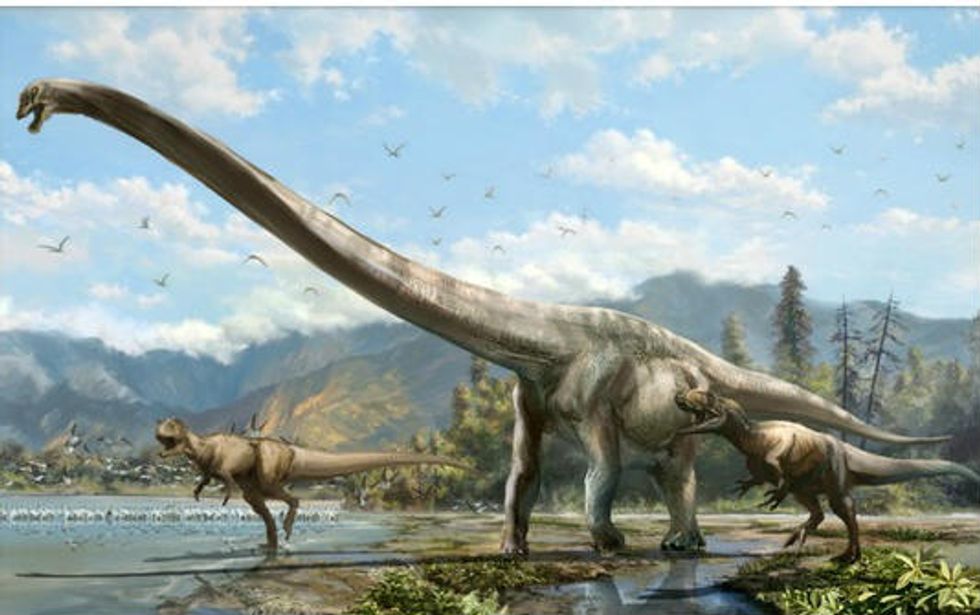
Image source: University of Alberta

The Journal of Vertebrate Paleontology has published new findings about a "dragon" dinosaur whose fossils were first discovered by Chinese construction workers in 2006.
Measuring about 50 feet long, the Qijianglongis is thought to have been one of the largest dinosaurs of the time in Asia during the Late Jurassic, or about 160 million years ago. The name Qijianglongis means "dragon of Qijiang" because it was discovered in Qijiang City, located in the central region of China, according to the University of Alberta.
Behold -- The Qijianglong: an incredible 50-ft 'dragon' dinosaur unearthed by Chinese farmers https://t.co/kyRlj986CL pic.twitter.com/gZCw0cop2z— CNN International (@cnni) January 30, 2015
“It is rare to find a head and neck of a long-necked dinosaur together because the head is so small and easily detached after the animal dies,” University of Alberta PhD student Tetsuto Miyashita said. "Qijianglong is a cool animal. If you imagine a big animal that is half-neck, you can see that evolution can do quite extraordinary things."
The massive reptile's neck is believed to have made up about one-third of its total length. But the necks were relatively lightweight despite the size since the neck vertebrae were basically air.
“Nowhere else we can find dinosaurs with longer necks than those in China. The new dinosaur tells us that these extreme species thrived in isolation from the rest of the world," Miyashita said.
The Qijianglongis was part of a family of dinosaurs known as mamenchisaurids, which were known for their extremely long necks. In some cases, their necks were up to half the length of their entire bodies. But as long-necked dinosaurs neared extinction in Asia, they slowly evolved into different forms.
Miyashita said it's unknown why mamenchisaurids didn't migrate to other continents. But, he noted, it's possible the dinosaurs were separated from other continents by water and that other species greatly outnumbered them by the time a land connection was restored.
A skeleton of the Qijianglong is currently on display in a Chinese museum.
More dino news: U of A researchers have discovered the 'dragon of Qijianglong.' https://t.co/2dggXzn7Ll pic.twitter.com/TZjIxLBS18— Calgary Sun (@calgarysun) January 28, 2015
(H/T: CNN)
–
Follow Jon Street (@JonStreet) on Twitter